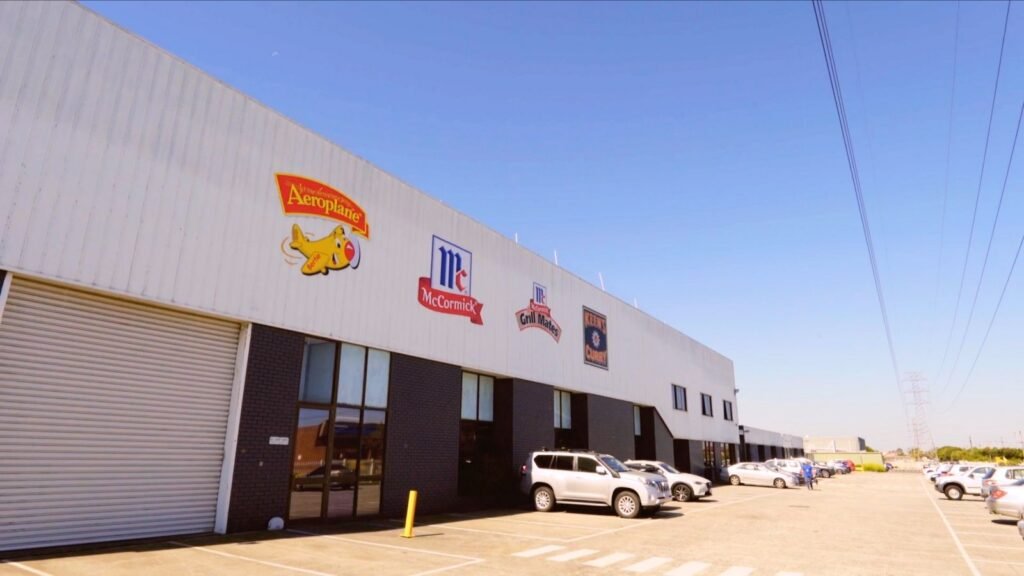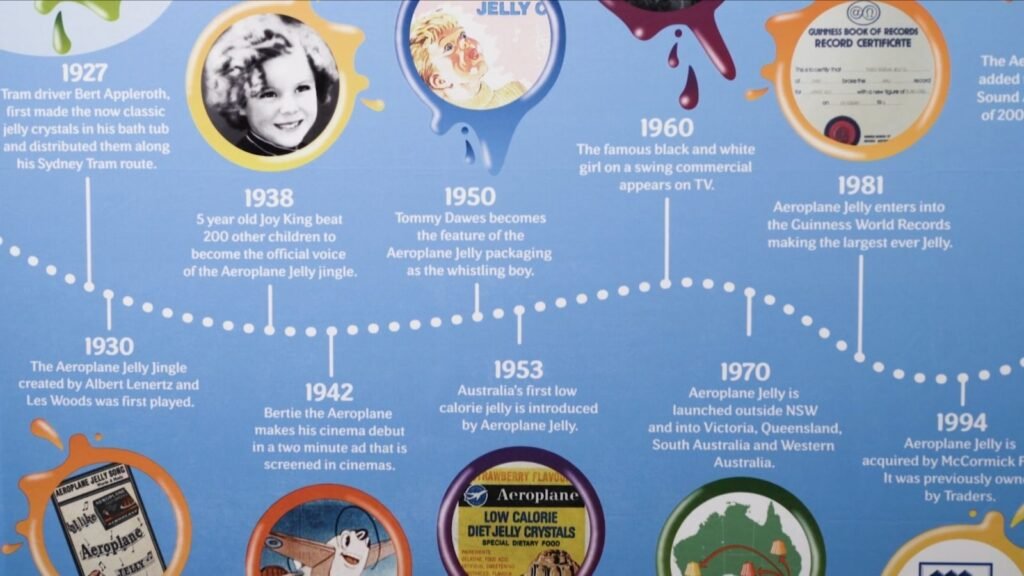As seen on Industry Leaders (Annex TV)
By The Business Today News Team
Sydney / Melbourne – For nearly a century, Aeroplane Jelly has been more than just a dessert staple in Australian households. Featured recently on Industry Leaders, the company’s trajectory – from bathtub experiments to being part of a global flavour conglomerate – illustrates both the strength of brands rooted in nostalgia, and the pressures they face in evolving consumer markets.
Origins and Identity
Aeroplane Jelly was founded in 1927 by Bert Appleroth, originally a Sydney tram conductor. Appleroth made early jelly crystals in his bathtub, selling along his tram route before formalising production under Traders Pty Ltd with partner Albert Francis Lenertz.
The name “Aeroplane” reflected Appleroth’s enthusiasm for aviation at a time when planes epitomised modernity and novelty. He even used a Tiger Moth aircraft in the 1930s to deliver jelly into rural areas.
Over time, the brand developed several iconic marketing symbols: the “I Like Aeroplane Jelly” jingle (famously recorded by a young Joy King in the 1930s), the figure of “Tommy Dawes” (the whistling boy) on packaging, and the mascot “Bertie the Aeroplane”. These assets have become deeply embedded in shared cultural memory.

Growth and Ownership
Originally a family-owned business, Aeroplane Jelly remained under the Appleroth family’s control until the mid-1990s. In 1994 (or 1995, according to some sources), ownership passed to McCormick Foods Australia, itself a branch of the U.S. flavour and spice giant McCormick & Company.
Production has also shifted over time. The first factory was in Paddington, NSW; for decades goods were made in West Ryde; in 2006 operations were consolidated in Clayton, Victoria.
Marketing, Nostalgia and Product Innovation
One of the most discussed themes on Industry Leaders was how Aeroplane Jelly balances heritage with relevance. The old jingle remains a touchstone. In 2017, to mark the brand’s 90th anniversary, Aeroplane Jelly re-introduced its classic jingle and elements of its traditional ads (such as the “girl on a swing”) in a campaign that paired vintage visuals with modern settings.
More recently, the brand has responded to shifting tastes. In late 2024 Aeroplane Jelly launched a sour jelly crystals range (“Sourz”), timed alongside a refresh of its packaging: softer typography, and a reimagined depiction of Bertie the Aeroplane. The aim is to modernise the visual identity while retaining what makes the brand distinctive.
Other product extensions over time have included “Lite” (a lower-calorie jelly) introduced mid-20th century, ready-to-eat cups, mousse, jelly slices, dessert mixes—and limited edition fruit-flavoured lines using native Australian fruits such as quandong, midjinberry and lilly pilly.

Strengths and Challenges
Strengths
- Brand Equity & Recognition: Aeroplane Jelly commands strong nostalgic resonance. The jingle, mascots, and imagery like the “girl on a swing” or “whistling boy” are deeply familiar. That heritage is a differentiator.
- Market Position: It remains the market leader in Australia’s jelly and flavour-dessert segment.
- Ability to Innovate within the Familiar: Introducing new flavour lines, packaging refreshes, and the recent sour trend show responsiveness to evolving consumer tastes, especially among younger buyers or those seeking novelty.
Challenges
- Balancing Heritage vs. Modern Appeal: The very history that gives Aeroplane Jelly strength is also a constraint. Missteps in trying to modernise risk alienating older consumers; staying too old risks relevance in younger cohorts.
- Competition & Market Trends: The broader jelly, confectionery, and dessert market is being shaped by health and wellness trends (lower sugar, natural ingredients), sustainability (packaging, sourcing), and consumers’ demands for transparency. Aeroplane Jelly has made moves but must continually adapt.
- Cost Pressures and Supply Chains: As with much of the food and beverage sector, input costs, regulatory compliance, and potential trade disruptions are ever-present risks.
- Branding Refresh Risks: The recent Sourz line and packaging refresh are welcomed by many, but some observers may see them as diluting the brand’s classic identity. How successful these changes are in customer acceptance remains to be seen.
Insights from Industry Leaders’ Segment (via Annex TV)
In the Industry Leaders profile, Aeroplane Jelly is portrayed as a brand that has managed to preserve its core identity while being willing to change where needed. The segment emphasised the importance of heritage-driven marketing, especially in family settings, and how Aeroplane Jelly uses its storytelling – not just products – to sustain its position.
Annex TV’s coverage also highlighted ongoing investment in design, flavour innovation, and market segmentation (targeting parents of young children, while appealing also to nostalgic adults). The show suggested that as Aeroplane Jelly moves toward its centenary in 2027, the challenge will be to ensure that both production and marketing evolve – without losing connection with what has made the brand iconic.
The Road to 2027 and Beyond
Aeroplane Jelly’s 100th year is approaching. Several threads will likely define how well it traverses that milestone:
- Product Development: New flavours, perhaps more “better-for-you” offerings, plant-based or gelatine alternatives, and clean labels.
- Packaging & Branding: Maintaining recognisability while ensuring packaging meets current sustainability and design trends. The recent softening of typeface and visual refresh suggests direction.
- Digital & Retail Channels: More dynamic marketing via online, social media, influencer storytelling; strengthening presence in convenience and impulse-buy segments; possibly international expansion, though historically Aeroplane Jelly has been very Australia-centred.
- Supply Chain Resilience: Securing supply of ingredients and managing cost pressures will be critical, especially if margins are under stress.
Overall Assessment
Aeroplane Jelly is a classic case of a heritage brand that has survived not solely because of what it was, but because of what it continues to become. Its deeply rooted cultural capital affords it a kind of grace many newer brands lack. Yet that grace is not enough on its own: relevance, agility and innovation will determine whether it remains a leader or becomes a fond relic.
As Industry Leaders via Annex TV observes, the brand’s next years will test whether nostalgia can be more than a safety net—but rather, a springboard. For consumers, that may mean jelly products that feel both comfortingly familiar and refreshingly new.









